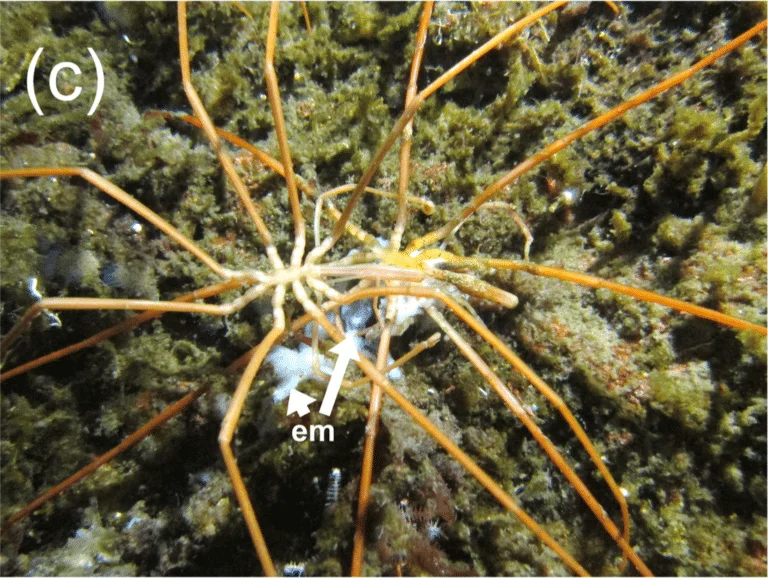Scientists spot giant Antarctic sea spiders breeding
- February 19, 2024
- 0
The reproductive process of giant sea spiders in Antarctica has eluded the attention of researchers for more than 140 years, from the moment they were discovered until today.
The reproductive process of giant sea spiders in Antarctica has eluded the attention of researchers for more than 140 years, from the moment they were discovered until today.
The reproductive process of giant sea spiders in Antarctica has eluded the attention of researchers for more than 140 years, from the moment they were discovered until today. Recently, scientists went to a distant continent and saw the behavior of these mysterious creatures with their own eyes.
Sea spiders (class Pycnogonida) are a group of spider-like invertebrates that live in marine environments worldwide. It is smaller than most nails but has the Antarctic form. Colossendeis megalonyx limb span (from the tip of one leg to the tip of the other leg) exceeds 40 centimeters. This animal is a famous example of “polar giantism,” an evolutionary phenomenon in which organisms in polar regions grow to much larger sizes than their relatives in warmer climates.
In all known species of sea spiders, the male parent cares for the offspring and carries the embryos on egg-bearing legs from fertilization until hatching and often later. Exclusive male care for offspring is the rarest form of parental care, and its evolutionary origins in sea spiders are not fully understood.

A research team diving beneath the Antarctic ice collected several mating spiders by hand. Scientists were transferred to tanks for observation. It turns out that giant sea spiders give birth to offspring that are different from other sea spider species. The researchers’ findings were published in the journal Ecology.
To the surprise of the study’s authors, two different mating groups produced thousands of tiny eggs, about a millimeter in diameter. They were first detected as a gelatinous cloud surrounding a single spider that had previously been part of a mating group. Instead of carrying the hatchlings until they hatched, as in most sea spider species, one of the parents (presumably the male) spent two days anchoring the eggs to the rocky bottom. A few weeks after spawning, the tiny eggs are covered in microscopic algae, providing excellent camouflage.
The scientists kept the embryos in filtered seawater in incubators at -1.8 degrees Celsius for 11 months and photographed them under a microscope every 2-3 weeks. Development was slow, characteristic of Antarctic species. The bases of the limbs became visible as early as day 83 and became more prominent throughout the remainder of the maturation process. The first larva to hatch was observed approximately 8 months after spawning.
As a result, scientists learned for the first time the details of the life cycle of these magnificent Antarctic animals. The obvious mechanism of embryo care in giant sea spiders is an evolutionary intermediate strategy between free spawning and parental incubation, which is characteristic of many other groups of sea spiders.
The general ecology and reproductive biology of marine species in Antarctica are largely unknown; So far only a few species have been described from this continent. Such studies shed light on exactly how animals live in one of the least-studied parts of the world’s oceans.
Source: Port Altele
As an experienced journalist and author, Mary has been reporting on the latest news and trends for over 5 years. With a passion for uncovering the stories behind the headlines, Mary has earned a reputation as a trusted voice in the world of journalism. Her writing style is insightful, engaging and thought-provoking, as she takes a deep dive into the most pressing issues of our time.